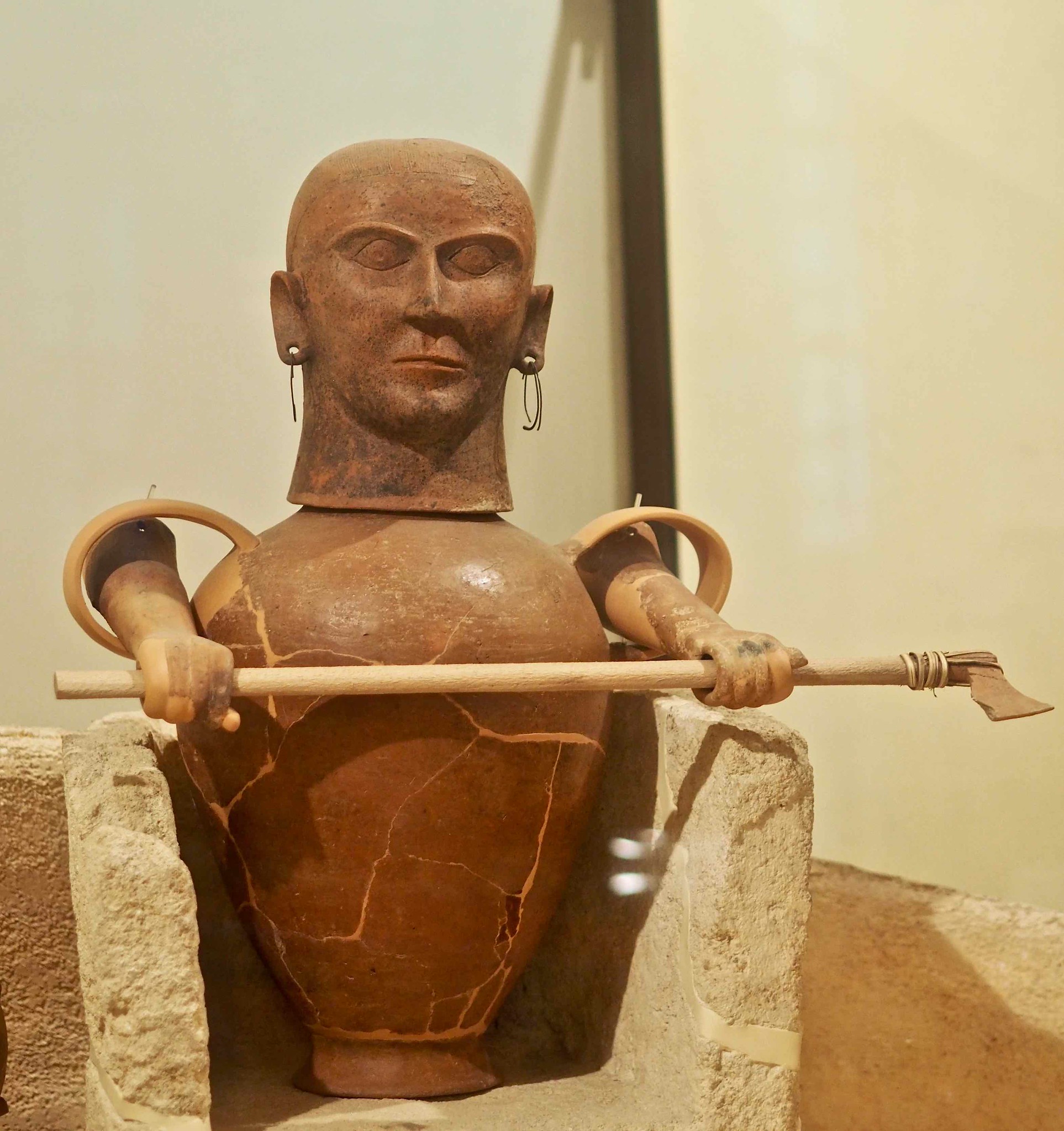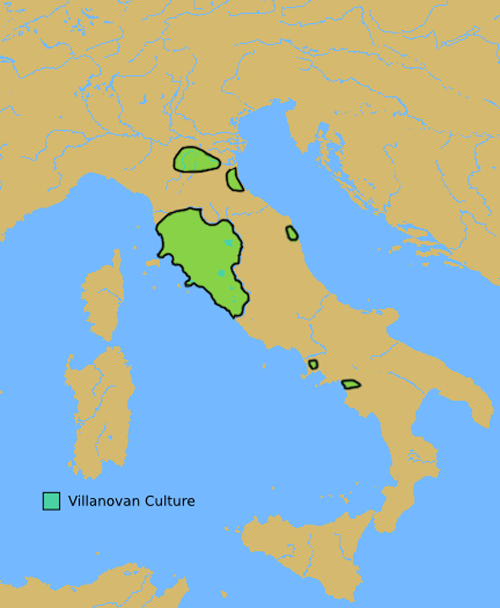
The Villanovan culture, the earliest phase of the Etruscan civilization, was the first Iron Age society in Italy and had artistic and trade links with ancient Greece.
Villanovans, the first society to introduce iron-working to the Italian Peninsula, followed directly from the Bronze Age Proto-Villanovan culture, which branched off from the Urnfield culture of Central Europe.
The name Villanovan, originating from the early phases of the Etruscan civilization, is derived from the site of the first archaeological finds related to this Iron Age culture. They were the ruins of a cemetery located near Villanova, a village of Castenaso. It is around twelve kilometers east of Bologna in Northern Italy.
The excavation went on from 1853 to 1855, carried out by the scholar and site owner Count Giovanni Gozzadini, and unearthed 193 tombs—six of which were separated from the others, potentially highlighting a raised social status.
The earliest burial rites in Villanovan culture typically involved cremation, with the ashes of the dead being placed in a decorated pottery ossuary of a biconical, or two-storied form, covered with a bowl. The lid of the urn was often a pottery version of a helmet. It was either a knobbed bell helmet of eastern Central Europe or the crested helmet of Northern Europe, the Villanovan specialty helmet.
The Villanovans in Tuscany also used the terra-cotta hot urn, which imitated a hut of wattle and daub on a frame of poles. The hut urn is typical of Northern European urn fields, but the two-storied urn may be related to similar urns from Hungary and Romania.
Periods of Villanovan culture, including Etruscan civilization
The Villanovan culture is broadly divided into Villanovan I, which dates from around 960 BC to 801 BC, and Villanovan II, dating from 800 BC to 720 BC. The latter saw the civilization undergo huge changes and even produced evidence of contact with Hellenic civilization and trade with the north along the Amber Road.

This evidence exists in the form of glass and amber necklaces for women, armor and horse harness fittings of bronze, and the gradual development of high-society graves rather than the earlier egalitarian culture. During the latest phase of Villanovan II, the Etruscans entered the picture. The northernmost regions of the Etruscan world, such as Etruria Padana, continued in their development as Villanovan III (750 BC to 680 BC) and Villanovan IV (680 BC to 540 BC).
The talents of the Villanovan artisans can be seen in the quality of the metalwork found in bronze and pottery, and some graves from burial sites exhibit an even more skillful touch, suggesting the development of societal elites within Villanovan culture.
Tools and other items were evidently left in graves, too, which may suggest a belief in the afterlife. Men’s graves were often filled with weapons and armor, while women’s typically contained weaving tools. A handful of the graves had this in reverse. This may highlight that some women used tools, and some men made clothing.
During the late Villanovan eras, the Etruscans traded with other states from the Mediterranean, such as Greeks, Balkans, and Sardinians. This trade led to an advancement in metallurgy, and Greek presence influenced Villanovan pottery.
Villanovan settlements
Villanovan settlements were typically centered in the Adriatic Etruria in Emilia Romagna (particularly Bologna and Verucchio near Rimini), in Marche (Fermo), and in the Tyrrhenian Etruria in Tuscany and Lazio. Further south, Villanovan cremation burials can be found in Campania at Capua, at the “princely tombs” of Pontecagnano near Salerno at Capo di Fiume, at Vallo di Diano, and at Sala Consilina.
See all the latest news from Greece and the world at Greekreporter.com. Contact our newsroom to report an update or send your story, photos and videos. Follow GR on Google News and subscribe here to our daily email!



